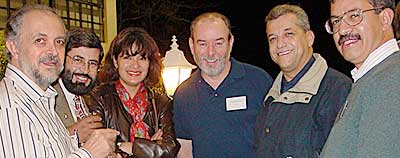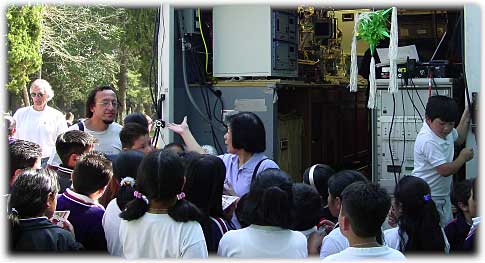 |
||
| Massachusetts Institute of Technology |
|
Integrated Program on Molina Center for Energy and the Environment Voice: (858) 657 Fax: (858) 657- E-mail: info@mce2.org |
Welcoming Remarksby Mario Molina Welcome to the first issue of the Newsletter of the Mexico City Program.
The Integrated Program on Urban, Regional, and Global Air Pollution: Mexico City Case Study—or the Mexico City Program (MCP), for short—is now about three years old, although intensive work has been ongoing for the last two years only. Results of this first phase of research have now appeared in a book, "Air Quality in the Mexico Megacity: An Integrated Assessment." A collaborative effort between our Mexican and U.S. colleagues, the research presented in the book served as the scientific foundation for "PROAIRE 2002-2010"; (Program to Improve Air Quality in the Metropolitan Area of the Valley of Mexico), a rather ambitious and yet essential set of guidelines to protect the public over the next decade from the harmful health effects of air pollution. Thanks to the collaboration of our coworkers,
the second phase of the Mexico City Program has gotten off to a
very good start. In January 2002 we held the MCP's Fifth
Annual Workshop in
Ixtapan de la Sal in the State of Mexico. Jointly organized by the
Mexico City Program and the Metropolitan Environmental Commission
(CAM), and hosted by the Secretary of Ecology of the State of Mexico,
the workshop brought together more than 160 participants from the
US, Mexico and Canada. Among other topics, the opportunities and
challenges for the implementation of PROAIRE
III program were discussed with government officials and stakeholders.
It is clear that considerable work must to be done to effectively
implement the new PROAIRE's various proposals and guidelines, and
we expect to contribute significantly to that effort. One of the major activities of the MCP's second phase is a Field Measurement Campaign to update and improve the emissions inventory of the Mexico City Metropolitan Area (MCMA), and to improve the current knowledge of the chemistry, dispersion and transport processes of the pollutants emitted to the MCMA atmosphere.
In February, we had a successful exploratory field measurement campaign. Its main goal was to determine how well our instruments and measurement systems work in the MCMA environment, and to learn enough about the concentration ranges, temporal and spatial variability, and emissions sources of key gaseous pollutants and aerosol components to allow us to plan the most effective intensive campaign to be performed early in 2003. The exploratory campaign utilized state-of-the-art instrumentation such as a single particle spectrometer, tunable diode lasers coupled to long-path absorption cells, a proton-transfer mass spectrometer, and a fine particle monitor that selectively samples soot particles. We monitored in real time not only standard pollutants such as ozone and nitrogen dioxide, but also key intermediate species such as formaldehyde and acetaldehyde, as well as the chemical composition of atmospheric particulates as a function of their size. The field measurement campaign is a joint effort of the MIT Mexico City Program and the Metropolitan Environmental Commission. It was planned and executed under the direction of Dr. Luisa Molina and included key scientists and researchers from the US (Aerodyne Research Inc., Washington State University, Montana State University, and MIT) and Mexico (Universidad Nacional Autónoma de México (UNAM), Universidad Autónoma Metropolitana - Azcapotzalco (UAMA), Universidad Autónoma Metropolitana - Iztapalapa (UAMI), Instituto Nacional de Salud Pública (INSP), Instituto Mexicano del Petróleo (IMP), Instituto Nacional del Ecología (INE), Secretary of the Environment of the Government of the Federal District, and the Secretary of Ecology of the State of Mexico). The logistical support of RAMA (Red Automática de Monitoreo Atmosférico) and CENICA (Centro Nacional de Investigación y Capacitación Ambiental) was invaluable for the success of this campaign. The data will be analyzed over the next few months, but the preliminary results already look extremely interesting. We are eager to continue developing the second phase of our Program with our collaborators, and look forward to activities scheduled for this summer such as the Mid-Career Workshop that will take place in Mexico City in August, as well as several working group meetings at MIT. |


